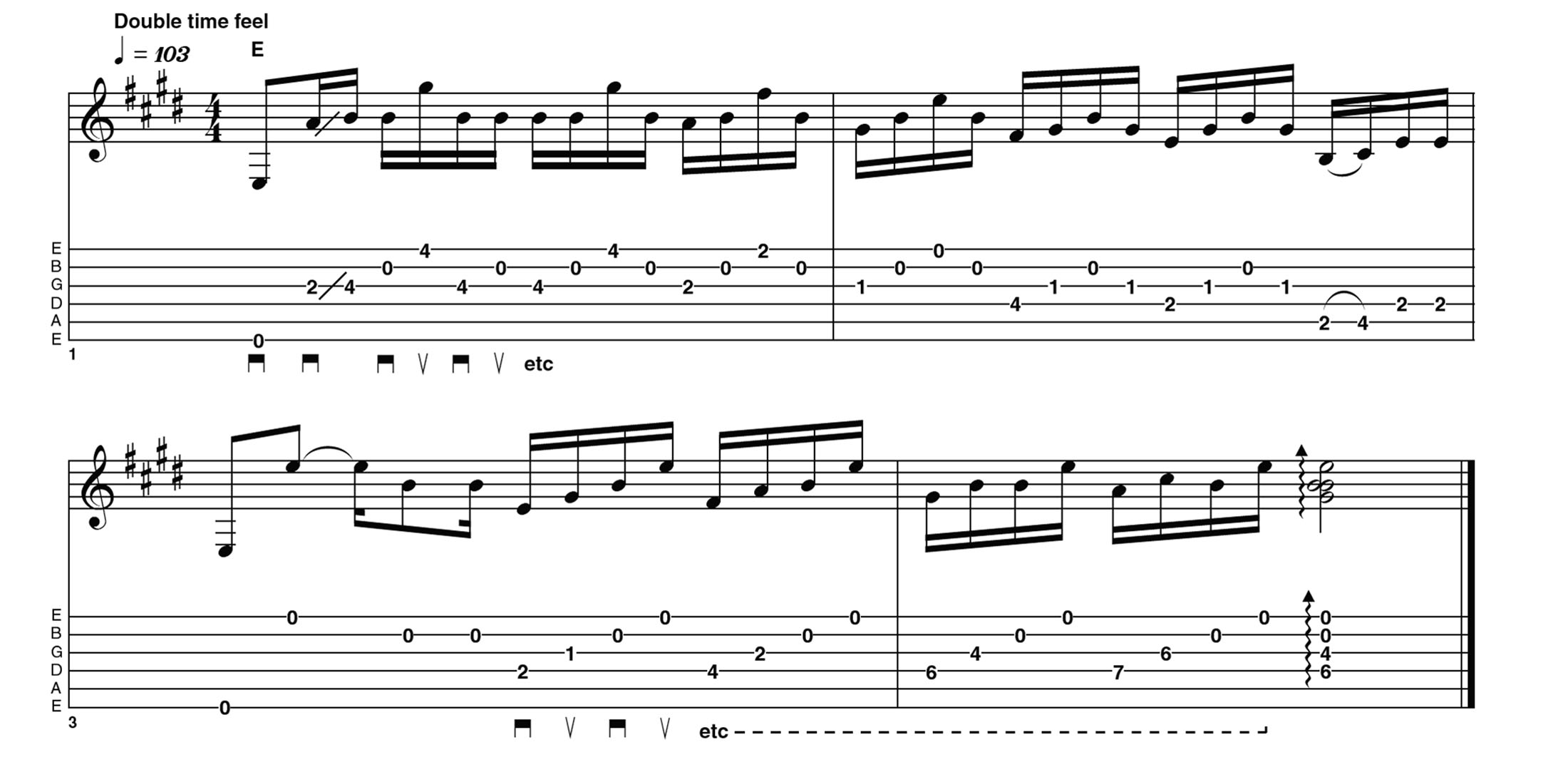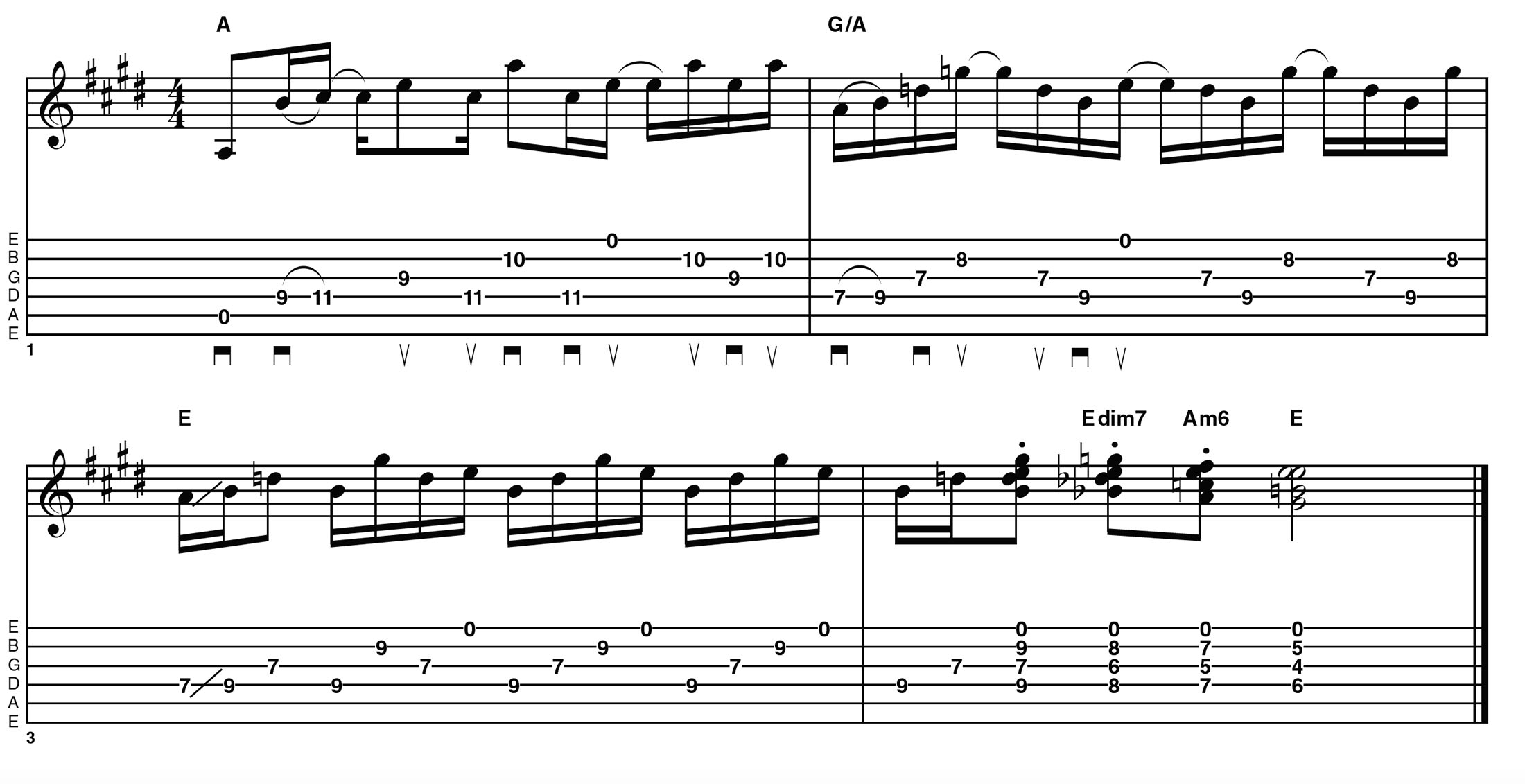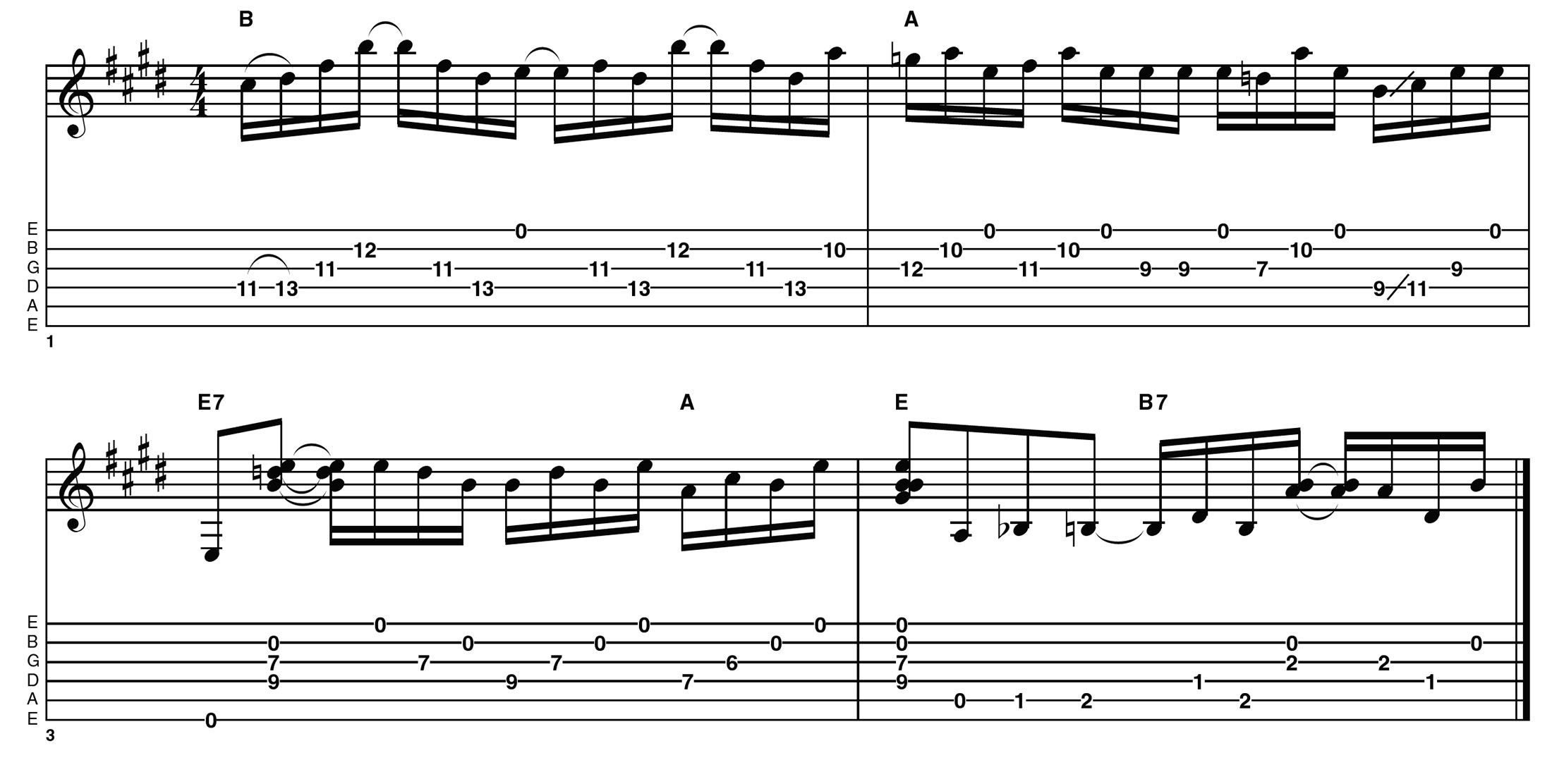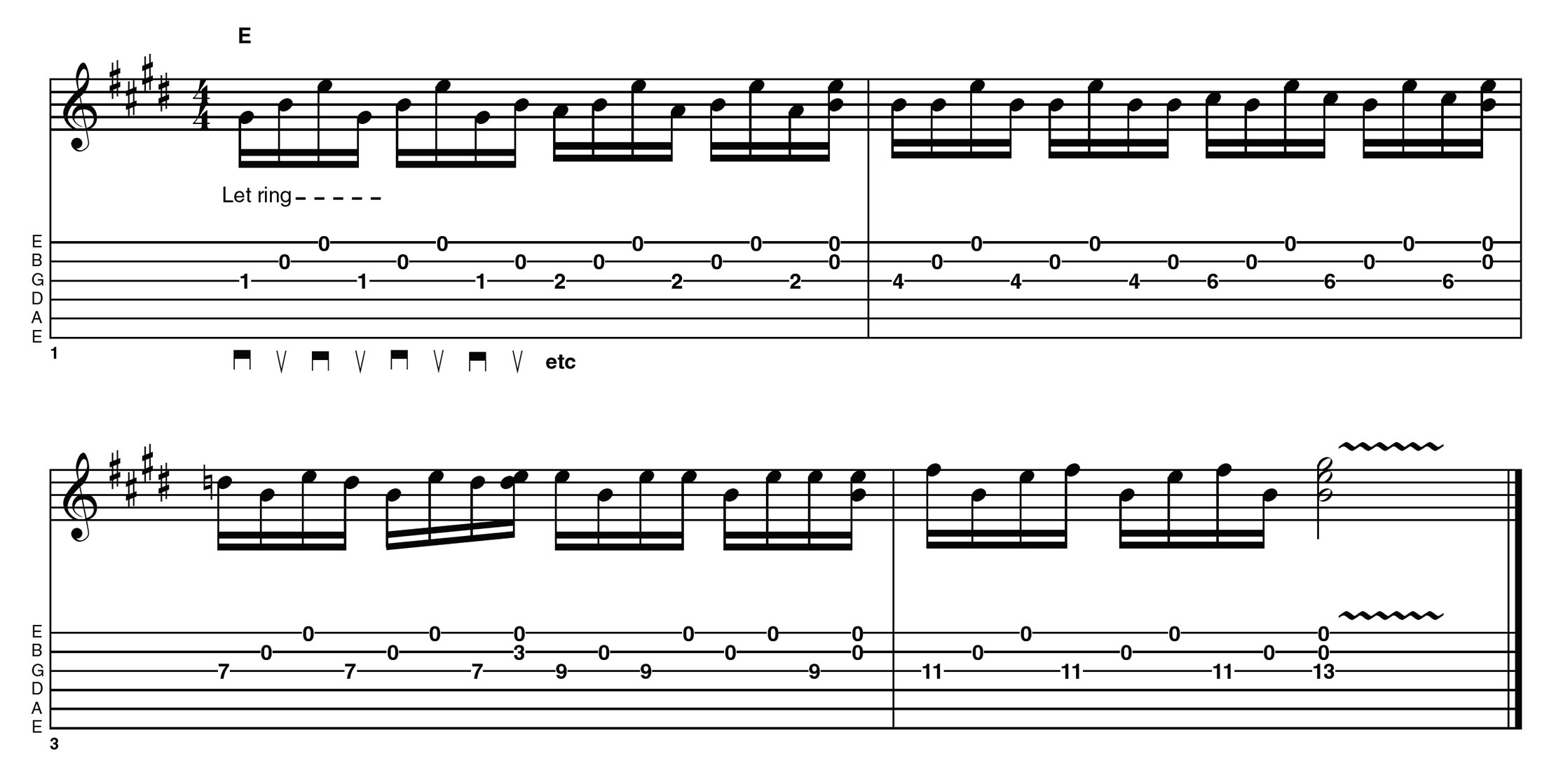Crosspicking is an advanced picking technique that will lend your licks an authentic country flavor – test your picking skills with this lesson
You can apply crosspicking techniques to all kinds of styles, from country to the blues, bluegrass and more

Have you ever been in a situation where an idea didn’t feel as easy to play as it was to dream up? Most of us have – and the barrier is generally technique.
This doesn’t have to mean rippling neoclassical arpeggios; it can happen in the blues or any other genre, for that matter. However, sometimes it’s hard to know how to go about solving issues such as this without feeling condemned to a punishing practice schedule akin to ‘technique bootcamp’.
One genre where advanced picking is put to more melodic use is bluegrass, which heavily features licks and arpeggios across the strings, often played with a technique called crosspicking.
I’ve played some examples in this style over a 12-bar backing in this lesson. If you look at Example 4 you’ll see that this sequence is alternate-picked, even though that doesn’t initially seem the most intuitive way to tackle it.
Many players would think of this in groups of three: two downstrokes followed by an upstroke. This isn’t ‘wrong’, but try it and you’ll become fatigued much more quickly. It’s also more difficult to seamlessly integrate alternate picked lines.
Which brings me to another point: working on this technique will improve your picking in all areas, including single-note lines. It optimises your picking-hand technique in a way that practising single-note lines exclusively doesn’t.
One final tip: hold the guitar pick at an angle to the strings. Most of us angle the pick diagonally somewhat, rather than hitting the string at 180 degrees, but I also mean tilt the pick so that the point slants slightly upwards (towards the ceiling) or downwards (towards the floor), whichever feels most comfortable – or maybe even a mixture of both! This helps avoid the pick becoming trapped between the strings as you crosspick.
Example 1

We’ve actually started with one of the trickier lines. Alternate picking patterns such as this can go ‘against the grain’ at first, but do persevere because it will save so much strain on your picking arm/hand.
The pick strokes are marked here to set you on the right path, as they are in the George Harrison-style arpeggios in bars 3 and 4. Try this at speed, then apply this motion to any slow practice you undertake, otherwise you may be rehearsing a movement that can’t be duplicated at speed.
Example 2.

Presuming a semiquaver alternate-picking pattern (starting with a downstroke) is key, but this doesn’t always mean picking every note. Check bars 1 and 2 to see the held/tied notes.
There are also a couple of hammer-ons and a slide that are obviously not picked. In these situations, resume the alternate picking – as if you had been picking every semiquaver! This is simpler to do than it is to explain, so check the transcription and/or video for some hints.
Example 3.

Unashamedly ‘borrowing’ from Steve Howe here, keep the advice from Example 2 in mind. Some of the notes are tied/not picked, so resume from where you would be if you had picked them to avoid reversing the pattern and getting tangled up.
Bar 2 features some tricky fretting-hand shifts, so watching the video may be helpful. At times like this, it’s good to have your picking-hand mechanics as automatic and relaxed as possible.
Example 4.

More of an exercise than a lick, this is nonetheless still a melodic pattern. Played with alternating down- and upstrokes, this type of crosspicking is known in bluegrass circles as a ‘forward roll’.
‘Pickslanting’, a technique where you slant the pick slightly towards or away from you, helps avoid getting the tip of the pick trapped between the strings. As with Example 1, try this at speed before practising slowly to make sure your technique isn’t holding you back.
Hear it here
Brad Paisley – Play
As the title suggests, this album features Brad demonstrating how and why his reputation as a masterful player has spread far and wide. He uses a dizzying variety of techniques, but cross- and alternate picking feature heavily among these.
There’s plenty of electric and acoustic guitar wizardry to be heard throughout the album, but start at the beginning with Huckleberry Jam, then check out Departure and Playing With Fire. Honourable mention should also go to the Eric Johnson vibe in Cliffs Of Rock City!
Tony Rice – Church Street Blues
An acoustic player rather than electric, Tony nevertheless shows himself here in this record from 1983 to be a master of crosspicking and integrating melodic lines and chord shapes.
Even if you only listen to this from a technical standpoint, the playing is sheer craftsmanship – and these skills can translate to acoustic or electric blues. Start with the title track, but be sure to check out his single-note soloing on Cattle In The Cane and Jerusalem Ridge, which features some nice twists on the minor pentatonic.
Doc Watson – S/T
Released way back in 1964, Doc Watson was tearing into cross- and alternate picking way ahead of the curve. Again, we’re focusing on an acoustic player, but these techniques are completely transferable to (and, in many cases, easier on) the electric.
Check out Nashville Blues to hear integrated chords and melody, then Black Mountain Rag for some single-note soloing. Finally, hear his complex accompaniment to Tom Dooley, with the addition of some harmonica worthy of Bob Dylan himself.
Get The Pick Newsletter
All the latest guitar news, interviews, lessons, reviews, deals and more, direct to your inbox!
As well as a longtime contributor to Guitarist and Guitar Techniques, Richard is Tony Hadley’s longstanding guitarist, and has worked with everyone from Roger Daltrey to Ronan Keating.











